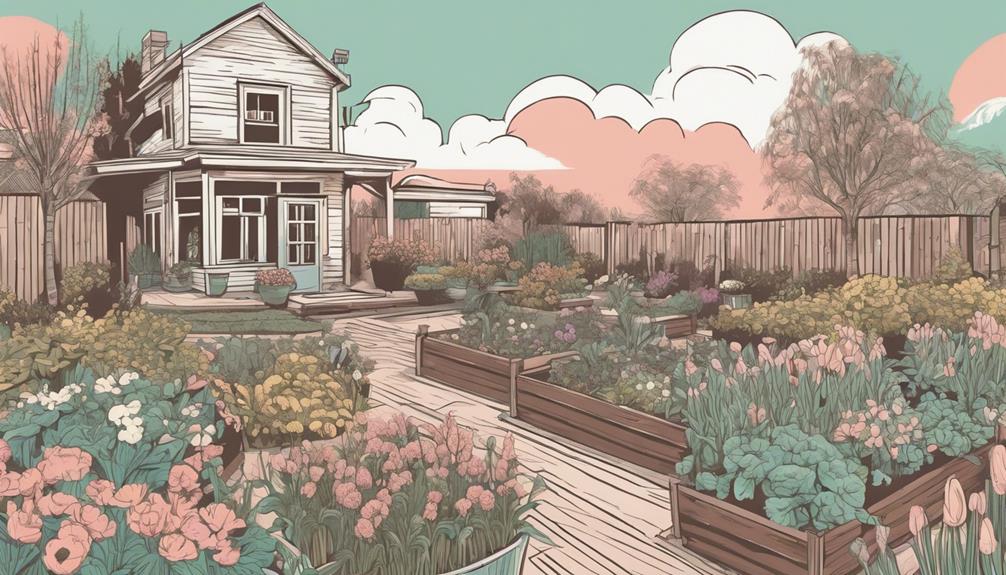How To Become More Self-Sufficient Without Starting a Full-Blown Farm…
Want to start preserving your harvest, making your own soap, or building a backyard root cellar — but not sure where to begin? “Homesteading Advice” gives you instant lifetime access to 35+ practical homesteading books on food preservation, veggie gardening, DIY natural cleaning products (save over $250 per year with this skill alone), brewing, off-grid energy, and a whole lot more…
Click Here To Check It Out Now!
“How can I set up a soaker hose system in my backyard garden? I have a small backyard farm in Halifax and really want to make sure my plants get consistent and efficient watering without having to hand water them every day. Also, my backyard is on a slight slope. Could you provide some detailed steps and things I should consider?” Thanks, Patrick, Halifax, Canada.
Understanding the Basics of a Soaker Hose System
Setting up a soaker hose system is a great way to ensure your plants get a steady and efficient supply of water. Soaker hoses are porous, allowing water to seep out slowly and directly into the soil, which minimizes evaporation and runoff. This method is ideal for gardens, especially those with dense plantings or raised beds.
Why Choose a Soaker Hose System?
- Water Efficiency: Soaker hoses deliver water directly to the base of the plants, reducing water wastage.
- Consistent Moisture: Ensures that plants receive a consistent amount of water, preventing over or under-watering.
- Time-Saving: Once installed, the system reduces the need for daily manual watering.
Planning Your Soaker Hose System
Assess Your Garden
Before diving into installation, take a good look at your garden layout. Note the following:
- Plant Placement: Identify the areas where plants are clustered. These spots will benefit the most from a soaker hose.
- Garden Size: Measure the length and width of the areas you want to water. This will help determine the amount of hose needed.
- Water Source Location: Identify where your main water supply (spigot) is and the proximity to the garden.
Dealing with Slopes
A slight slope, as in Patrick’s case, needs special consideration:
- Gravity’s Impact: Water will naturally flow downhill, so the placement should counter this effect to avoid water pooling at the lower end.
- Check Valve Installation: Installing check valves can help regulate the flow of water uphill, ensuring even distribution.
Gathering Materials
Here’s a list of items to have on hand:
- Soaker Hose(s) (measure and estimate length needed)
- Hose End Cap (to seal the end of the soaker hose)
- Pressure Regulator (to control water pressure and prevent hose damage)
- Filter (to keep debris from clogging the soaker hose)
- Timer (optional but useful for automated watering)
- Hammer and Hose Stakes (to hold the hose in place)
Step-by-Step Setup Instructions
1. Measure and Cut Your Soaker Hose
Based on your garden measurements:
- Plan the Layout: Lay the hose out in the garden to see if any adjustments are needed before cutting.
- Cut as Necessary: Use scissors or a sharp knife to cut the hose to the required lengths.
2. Connect the Hose to the Water Source
Connecting properly ensures efficient water delivery:
- Attach the Filter: Begin by connecting a filter to the spigot to keep out debris.
- Connect the Pressure Regulator: This will control the water pressure to avoid damaging the hose.
3. Position and Secure the Soaker Hose
Placement is key to effective watering:
- Lay the Hose: Place the soaker hose around the base of plants or in rows.
- Use Hose Stakes: Secure the hose in place using stakes to prevent shifting.
4. Test the System
Ensuring everything works properly before regular use:
- Turn On the Water: Check for even water distribution along the hose length.
- Inspect for Leaks: Fix any leaks noticed by adjusting or replacing sections as needed.
5. Add a Timer (Optional)
A timer takes the guesswork out of watering schedules:
- Set Desired Watering Times: Attach the timer to the spigot and program it to water during cooler times of the day.
- Monitor and Adjust: Keep an eye on the system initially to ensure it waters effectively.
Maintaining Your Soaker Hose System
Regular Inspections
Periodic checks ensure the longevity and efficiency of your system:
- Inspect for Damage: Look for any holes or cracks in the hose that can cause uneven watering.
- Clean Filters: Regularly clean the attached filter to prevent clogs.
Seasonal Adjustments
Adjustments might be necessary as seasons change:
- Winter Preparations: Remove and store the hose in a sheltered place during freezing temperatures to prevent damage.
Watering Adjustments
Adjust watering depending on weather and plant needs:
- Monitor Plant Health: Adjust the watering schedule if you notice plants are too dry or waterlogged.
Common Problems and Troubleshooting
Uneven Water Distribution
If some parts of the garden are getting more water than others:
- Check for Slopes: Ensure hose placement is even, and use check valves if necessary.
- Pressure Issues: Adjust the pressure regulator to ensure balanced water flow.
Clogged Hose
A common issue with soaker hoses:
- Regular Cleaning: Clean the hose regularly by running water through it or soaking it in vinegar to dissolve mineral deposits.
Benefits of a Soaker Hose System
Patrick will appreciate knowing some extra perks:
- Cost-Effective: Saves on water bills by using water more efficiently.
- Healthier Plants: Plants get consistent moisture levels, promoting healthier and more robust growth.
- Reducing Weeds: By concentrating water on plant roots, fewer weeds receive water and nutrients.
Final Thoughts…
Patrick, setting up a soaker hose system in your Halifax backyard can transform your garden care routine, making it both time-efficient and beneficial for your plants. Remember to measure properly, ensure consistent water flow especially with your slight slope, and periodically maintain the system. Thanks for your question, and happy gardening!

